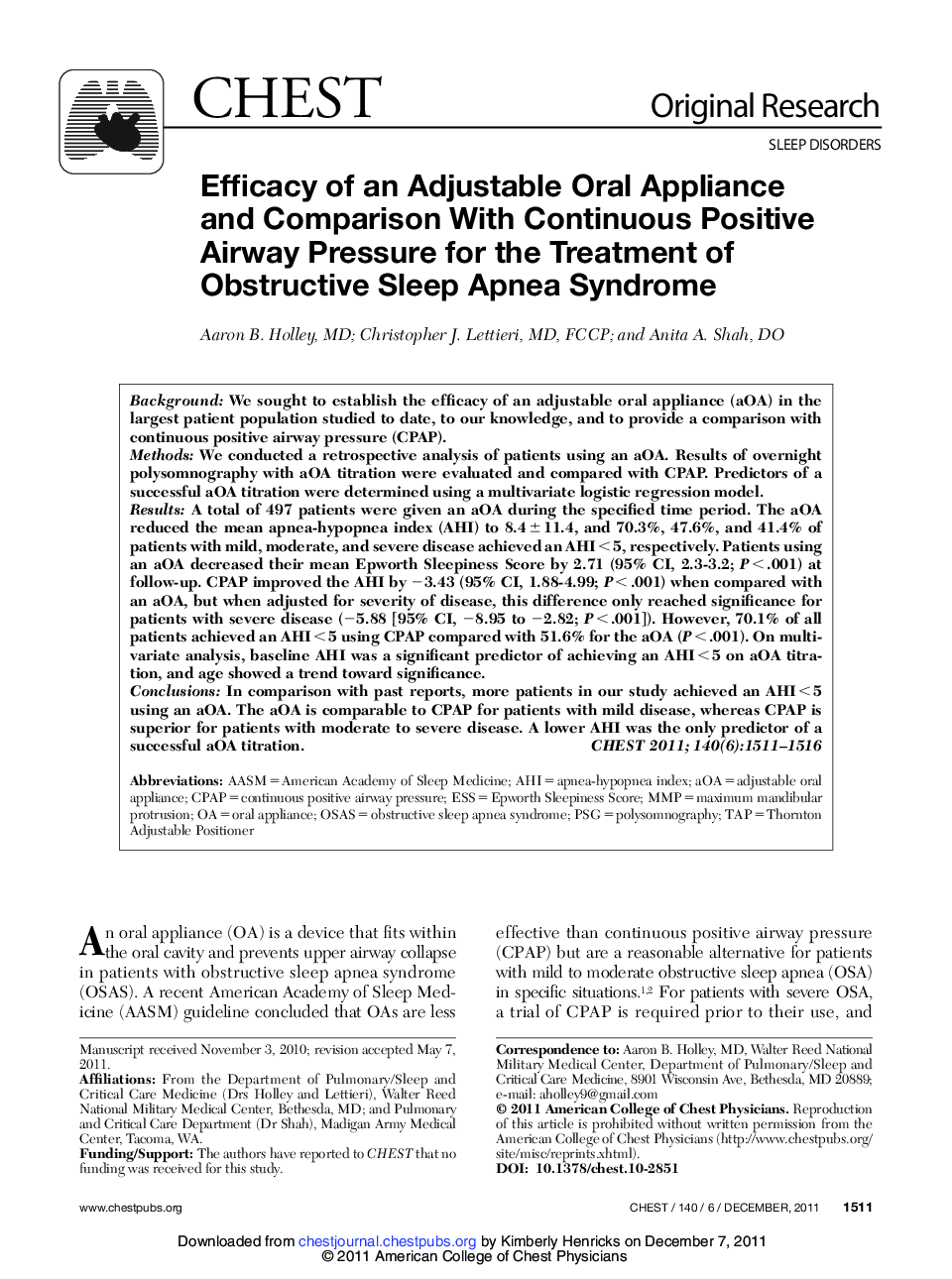| Article ID | Journal | Published Year | Pages | File Type |
|---|---|---|---|---|
| 2901641 | Chest | 2011 | 6 Pages |
BackgroundWe sought to establish the efficacy of an adjustable oral appliance (aOA) in the largest patient population studied to date, to our knowledge, and to provide a comparison with continuous positive airway pressure (CPAP).MethodsWe conducted a retrospective analysis of patients using an aOA. Results of overnight polysomnography with aOA titration were evaluated and compared with CPAP. Predictors of a successful aOA titration were determined using a multivariate logistic regression model.ResultsA total of 497 patients were given an aOA during the specified time period. The aOA reduced the mean apnea-hypopnea index (AHI) to 8.4 ± 11.4, and 70.3%, 47.6%, and 41.4% of patients with mild, moderate, and severe disease achieved an AHI < 5, respectively. Patients using an aOA decreased their mean Epworth Sleepiness Score by 2.71 (95% CI, 2.3-3.2; P < .001) at follow-up. CPAP improved the AHI by −3.43 (95% CI, 1.88-4.99; P < .001) when compared with an aOA, but when adjusted for severity of disease, this difference only reached significance for patients with severe disease (−5.88 [95% CI, −8.95 to −2.82; P < .001]). However, 70.1% of all patients achieved an AHI < 5 using CPAP compared with 51.6% for the aOA (P < .001). On multivariate analysis, baseline AHI was a significant predictor of achieving an AHI < 5 on aOA titration, and age showed a trend toward significance.ConclusionsIn comparison with past reports, more patients in our study achieved an AHI < 5 using an aOA. The aOA is comparable to CPAP for patients with mild disease, whereas CPAP is superior for patients with moderate to severe disease. A lower AHI was the only predictor of a successful aOA titration.
